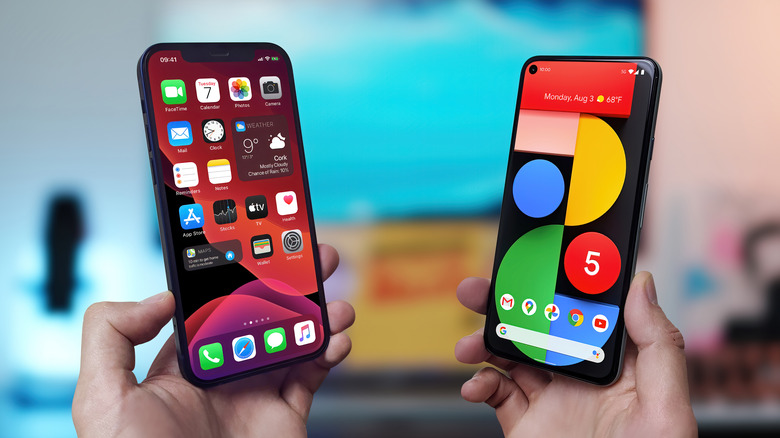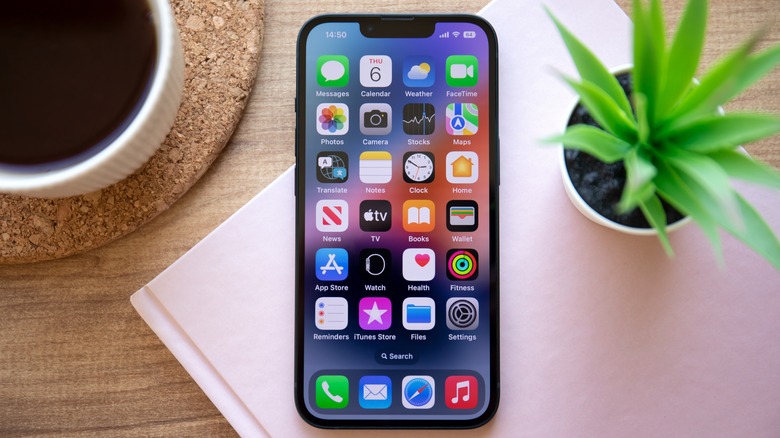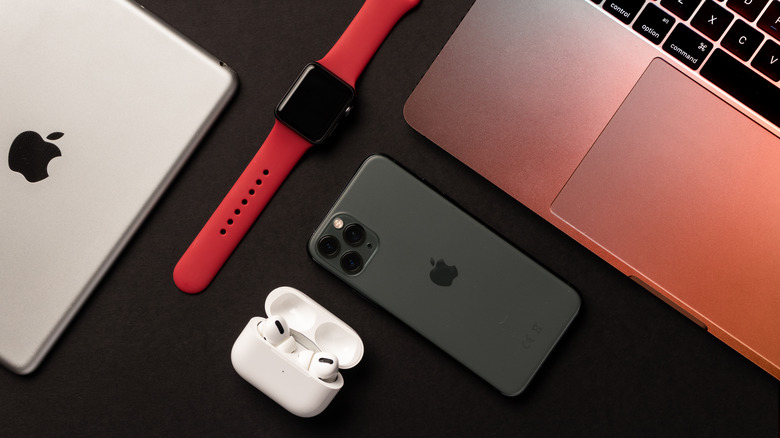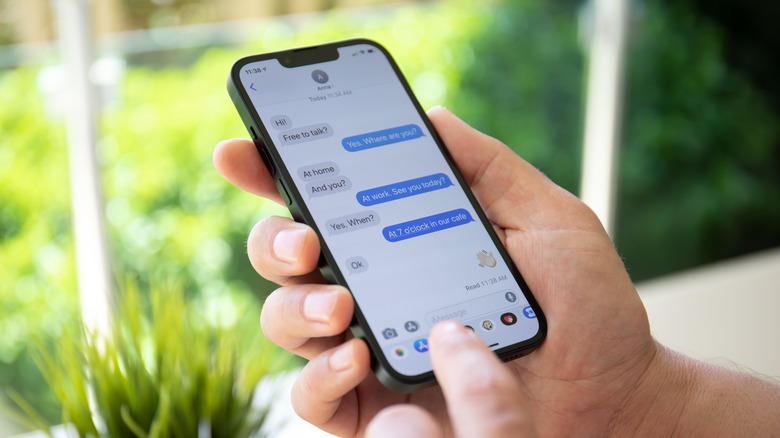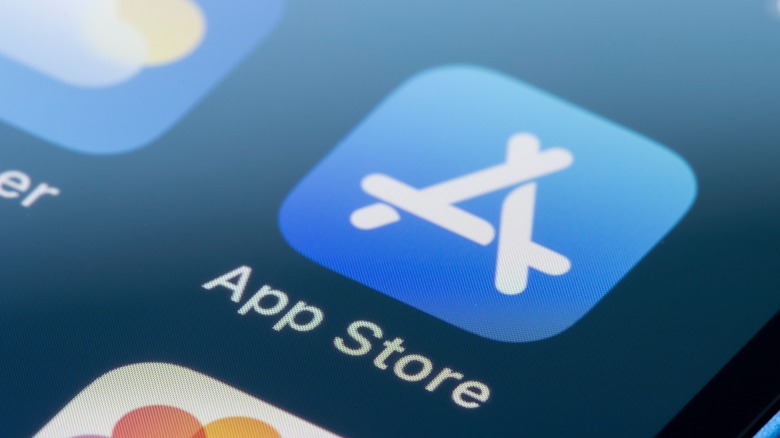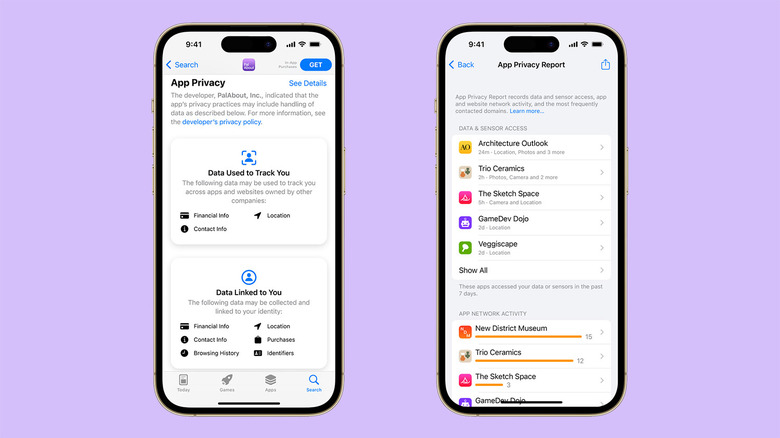5 Big Reasons You Shouldn't Switch From iPhone To Android
Switching from iPhone to Android — or vice-versa — is often a drastic experience. Some of those who leap to the other side like it, while understandably, most have difficulty giving up older habits and adapting to new ones. Given the pace and scale at which Android smartphones evolve and attain new features, such as folding screens or superfast charging, switching camps can be extremely tempting. However, when you give into the allure, instant remorse may crop up and clarify why you shouldn't have switched from an iPhone to an Android.
Despite similar use cases, Android and iOS differ in ways that lead to a significant rift between the two platforms. This includes the core philosophies on which each mobile operating system is based. Android is free and open-source, meaning any individual or company can change the version supplied by Google and vend it as their own. Meanwhile, iOS is closed-source and strictly controlled by Apple to ensure the experience is secure, private, and consistent across all devices running the same version. These philosophies also impact how you can use your iPhone or Android device.
If troubles with your iPhone — or exciting features on a new Android phone — have you on the fence, here are five reasons you must reconsider before switching from iPhone to Android.
iPhones have a simpler, consistent interface
iPhones have an intuitive user interface, with easy access to apps right from the home screen. Android phones, in contrast, traditionally come with an app drawer where you find all the apps installed on the phone, while a few app icons (or shortcuts) can be placed on the home screen.
Over the years, Android manufacturers have added the option to automatically add newly installed apps to the home screen or (temporarily) remove the app drawer to make it easier for iPhone users to transition. Simultaneously, Apple has included an App Library to arrange app icons into automatically organized folders based on their category and free up space on the home screen. Although visual preferences are subjective, iOS does more to automatically clean up the interface, while Android remains at the user's disposal or using a unique launcher with sorting features.
Additionally, while the user experience remains uniform on every iPhone, it varies considerably from one Android maker to another. Android manufacturers use customized interfaces, called "skins," alongside Google's open-source solution, leading to significant visual and functional differences between phones from different brands.
Moreover, the first thing you may notice as you switch from an iPhone to an Android smartphone is the larger number of buttons and excessively comprehensive menus or Settings. While seasoned Android users may see this as the means to customize their phone's interface, it may seem overwhelming and unnecessary to new users.
You lose access to Apple-exclusive services
One major reason iPhones have a binding effect on their existing users is exclusivity. Services such as AirDrop, FaceTime, iMessage, Continuity, Universal Clipboard, or support for accessories such as the Apple Watch are limited to Apple devices working harmoniously. Meanwhile, only crude versions — if at all — of these services are available to those in the Android ecosystem. If you rely on any of these features, you will regret switching to Android.
Android has its own adaptation of AirDrop, called Nearby Share, which can be used with other Android devices, Chromebooks, and Windows devices — but not Apple devices. You can also send files to a Mac with Nearby Share with an unofficial tool. However, if you want this ability from the get-go — or without any hackery — you might find this experience jarring. Likewise, Apple does not offer a native FaceTime app for non-Apple devices. While you can join FaceTime calls using a web browser on your Android phone, you get limited controls.
Similarly, text messaging to an iPhone from an Android device comes with a sense of disparity. Compared to other iPhone users, you miss out on features such as read receipts, end-to-encryption, typing indicators, and threaded replies among other things. While iPhone users can also edit messages and other iPhone users can see those reflected instantly, Android users receive a new message suggesting the text has been edited. And then, there is a major image problem with iMessage that Apple refuses to rectify.
You will simply (be forced to) miss iMessage
This one, unfortunately, is more of a warning than a potential regret. If most of your kin and friends circle comprises Apple users, you may be mistreated based on how your text messages appear to iPhone users. This is because Apple assigns green bubbles instead of the usual blue ones to conversations with non-Apple devices.
Since iMessage is Apple's proprietary solution, iPhones use the archaic SMS protocol to communicate with Android — or MMS for photos or videos, leading to extreme compression. This is despite the fact that Google has adopted a newer and richer protocol called RCS or Rich Communications Services, which Apple refuses to adopt. Apple doesn't feel convinced enough to "put a lot of energy into" fixing this mess that exists while messaging between an iPhone and an Android device, especially since iMessage is experientially superior to RCS.
While we do not endorse Apple's resistance to offering an inclusive experience, we must warn you that you will likely face friction — and potentially abuse — if most of your friends and family use iPhones. Or you can simply use a third-party instant messaging service such as WhatsApp or Telegram, which do not discriminate between operating systems.
Many apps launch on iOS before Android
App developers often prefer the App Store as the first destination for their apps. Some notable mentions include the voice-based social app, Clubhouse, and the official ChatGPT app for iPhone. One of the primary reasons for this preference is the large and dynamic domain of Android devices. They come in numerous different screen sizes and with varying chops for performance, requiring developers to test their apps on many devices to ensure an enjoyable experience on most of them.
In contrast, the limited number of iPhone models (with a major intersection in hardware) makes it easier for developers to optimize their apps for better performance. The relatively smaller number of iOS users gives developers a better chance to deploy and test apps — and make changes to their apps or sales strategies accordingly. Meanwhile, the variety in Android phones and tablets is also why many Android apps feel relatively poorly optimized than their iOS counterparts.
Yet another reason behind better apps on iOS is Apple's stricter guidelines for app approvals. Apps submitted for Apple's approval must not only be free of malware or pass specific performance metrics but also offer a clean and intuitive design that aligns with iOS, ensuring a generally better quality of apps.
iOS is also financially more rewarding for developers. As of 2021, iOS users spent twice as much as Android on in-app purchases, making the former more lucrative.
You miss some privacy features
Apple actively controls iOS and the degree of permissions third-party apps enjoy on the platform. This means iPhones generally have a more robust defense against cyberattacks and malware — although it does not guarantee complete protection from forms of online sabotage. Unlike Android, which allows modifications at the root level, Apple vehemently opposes the "jailbreaking" of iPhones as it might create backdoors for vulnerabilities.
Apple also uses the same argument to defend its choice to limit sources from where users can download and install apps. iOS limits users to install apps only from the App Store, using it as a rationale for security. That might change soon as Europe's Digital Markets Act (DMA) compels Apple to allow third-party app stores on iOS by March 2024, although these changes may not come to the U.S.
Android, in contrast, is much more lenient when it comes to installing apps from unknown and unauthorized sources. Android users may use this convenience to download apps not available in their region — but you can also end up with "cracked" versions of apps that may turn out to be a virus.
Meanwhile, Apple lets users choose if their personal data can be used for advertising, even though researchers have found it may not be foolproof. But in theory, you can deny apps from tracking your usage across other apps from the same developer. Lastly, iOS also offers detailed reports on how each app uses data or accesses permissions, delivering a greater sense of control than Android.
